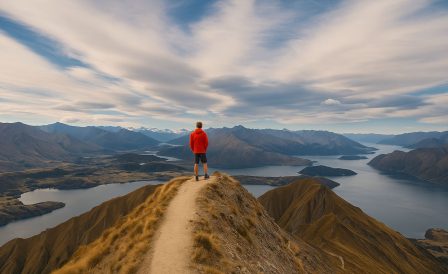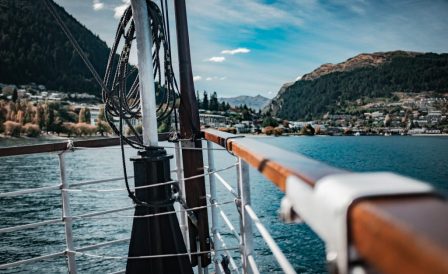Valeriy and his son studied English in New Zealand. You can read about that in his previous article. This time, they’re sharing how they hit the road and explored the country by car: planning the route, budgeting, the natural and cultural highlights of New Zealand, and tips for anyone planning a similar journey.
Content
- Preface
- Trip to Cape Reinga
- Trip to Karekare, Piha, and Muriwai Beaches
- Trip to Hamilton and Tauranga
- Trip to Rotorua, lake Taupo, and Mt. Ruapehu
- Epilogue
Preface
New Zealand is a land of a thousand beaches. Each more beautiful than the last. If you drive along the coast, breathtaking ocean views reveal themselves every few kilometers. And if you were to stop at every bay and beach, you’d probably need a lifetime to explore both the North and South Islands.
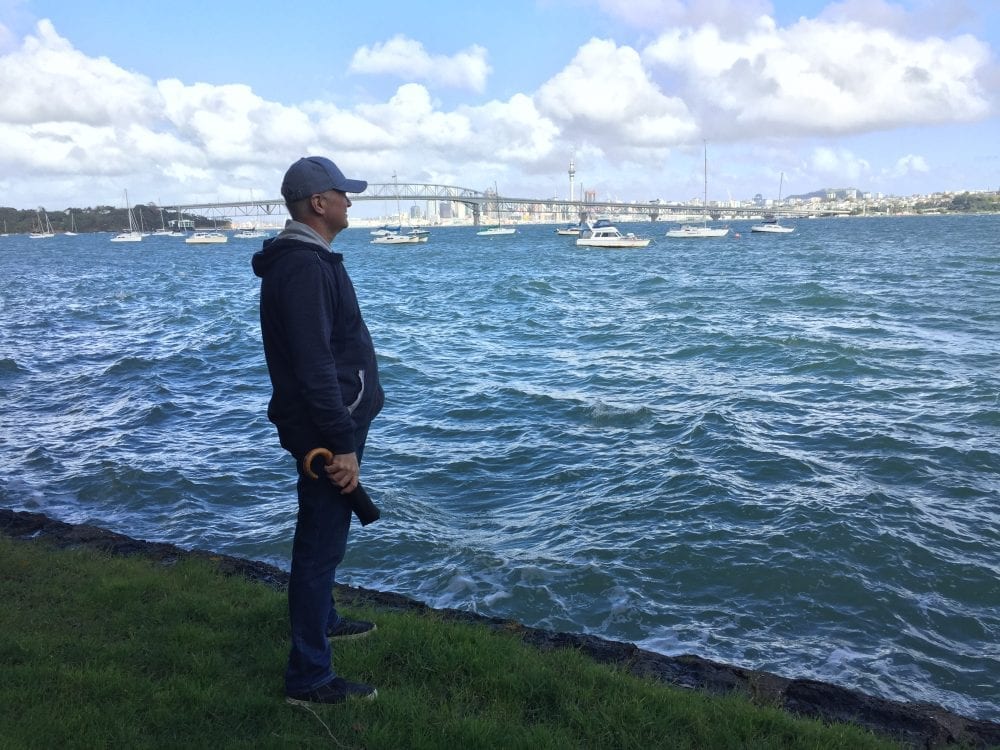
Auckland
Trip to Cape Reinga
Anyone visiting the North Island should make a “must-see” list of attractions. And in my opinion, one of the most important places is Cape Reinga. It’s the northernmost point of the North Island and the closest to the equator in all of New Zealand. Here, you’ll find a lighthouse and a scenic lookout where you can watch the Tasman Sea meet the Pacific Ocean.
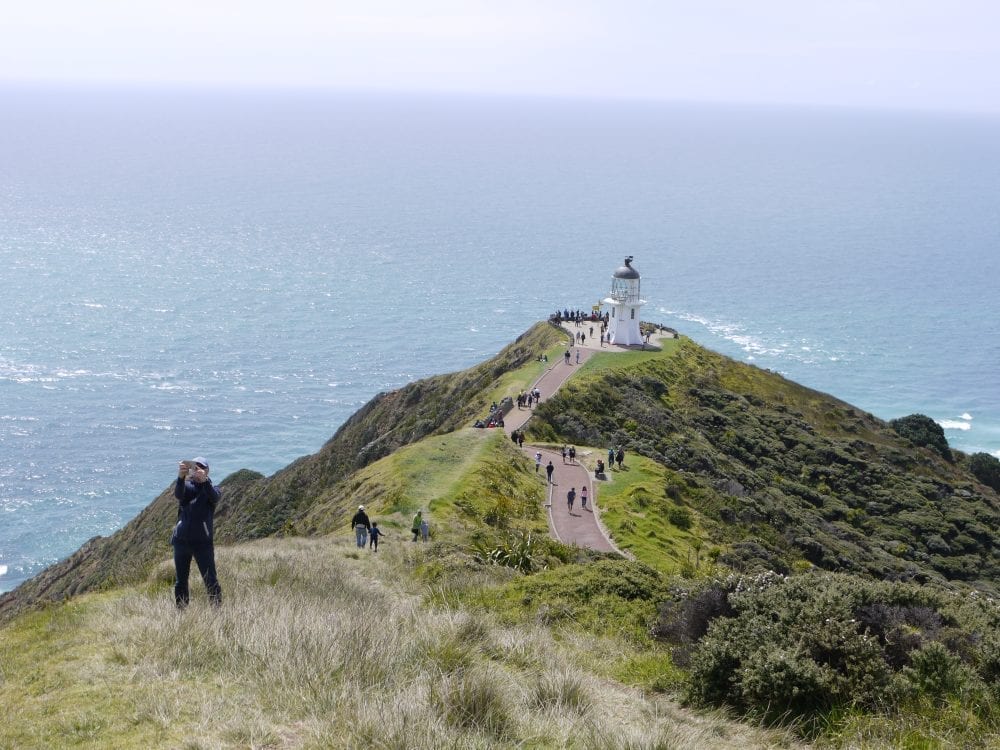
Cape Reinga
Car Rental
This was the first road trip in New Zealand for my son and me, and also our first experience renting a car. After comparing options online, we chose Omega Rental Cars, located centrally on Beach Rd. We were looking for a small, reliable, and budget-friendly car—and we found one.
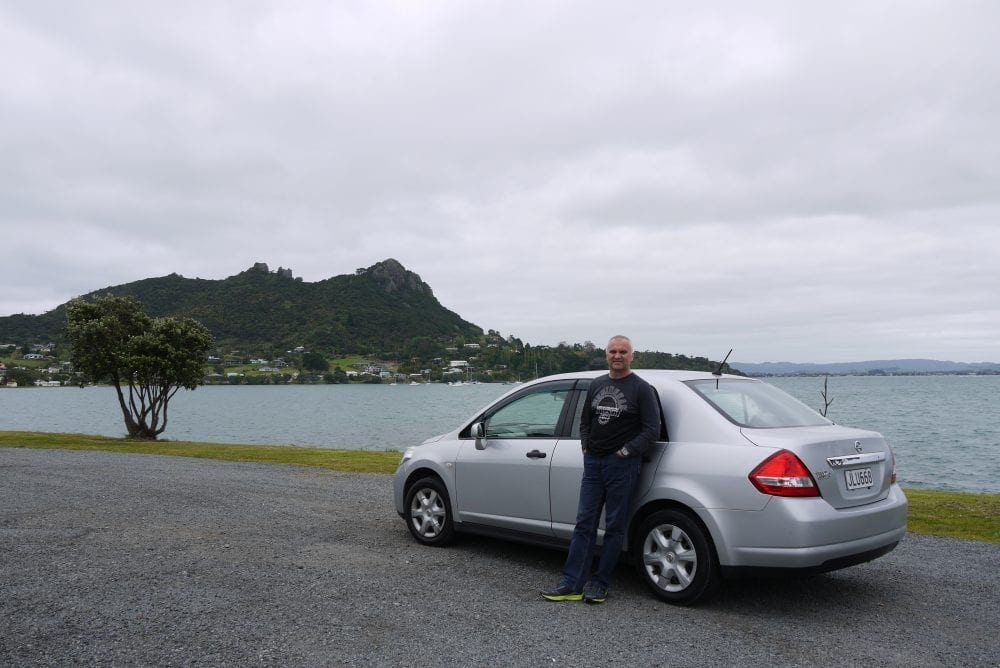
Наш арендованный автомобиль Nissan Tiida
We rented a Nissan Tiida, a 10-year-old sedan with a 1.5L petrol engine, automatic transmission, and 200,000 km mileage. It still looked pretty decent.
We paid around NZ$100 for a two-day rental with full insurance, including a 10% welcome discount. We studied the map, watched video blogs from travelers who had driven to the cape, and planned our route. The distance from Auckland to Cape Reinga is about 450 km, taking 5–6 hours by car. We decided to drive along the east coast, stopping for the night in Russell. On day two, we’d reach Cape Reinga and return to Auckland the same night.

Distance between Auckland and Cape Reinga
The start of the trip
It was Labour Day, a public holiday, so we left early to avoid traffic. Driving in New Zealand is on the left side. I had experience with left-side driving in Asia, but it still felt a bit nerve-wracking. We followed State Highway 1 using Google Maps. The roads were excellent, with clear signs and markings—truly a pleasure to drive on.
There’s a toll tunnel along the highway that must be prepaid via the NZ Transport Agency’s website (about NZ$10–15). You can avoid it by taking a detour through the lovely town of Orewa, which adds only a small distance. We stopped there and found a beautiful beach with a car park and public restrooms.
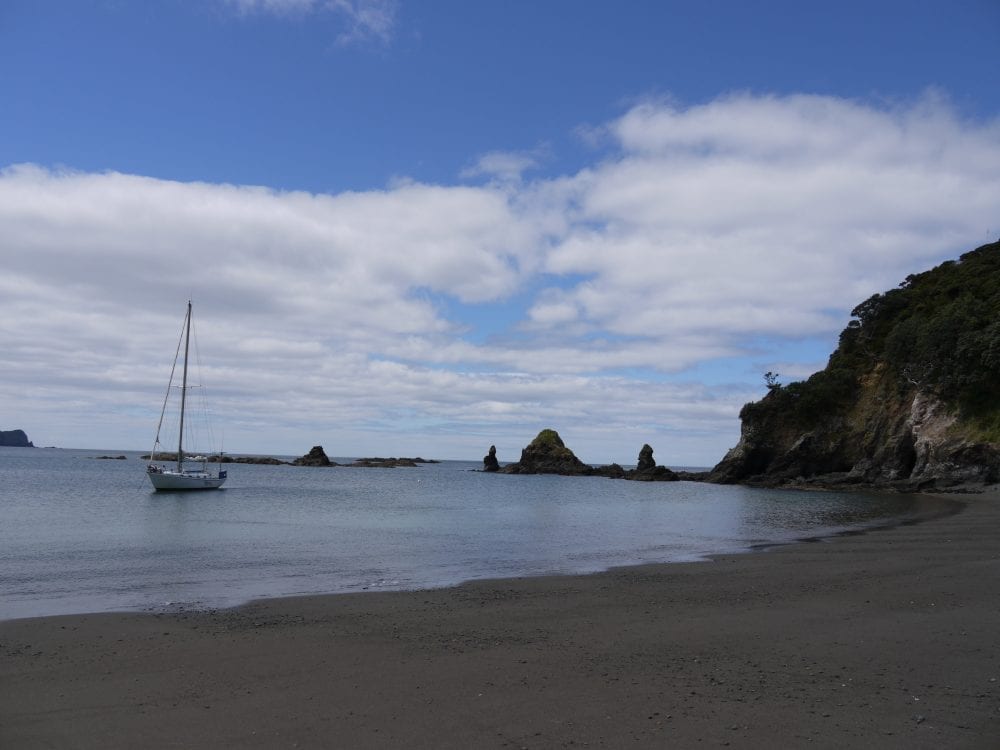
Whangarei
From there, the road became two-lane and traffic heavier, with cars moving bumper to bumper at around 100–110 km/h. Passing was only possible on uphill stretches with designated lanes. Our next stop was Whangarei, known for its unique drawbridge—we drove right over it.
At Whangarei Heads, there’s a free campervan area called Reotahi – Overnight Campervan Parking with picnic tables and restrooms. It’s a nice place for a walk to a scenic bay with ocean views, and a marine port is located opposite.
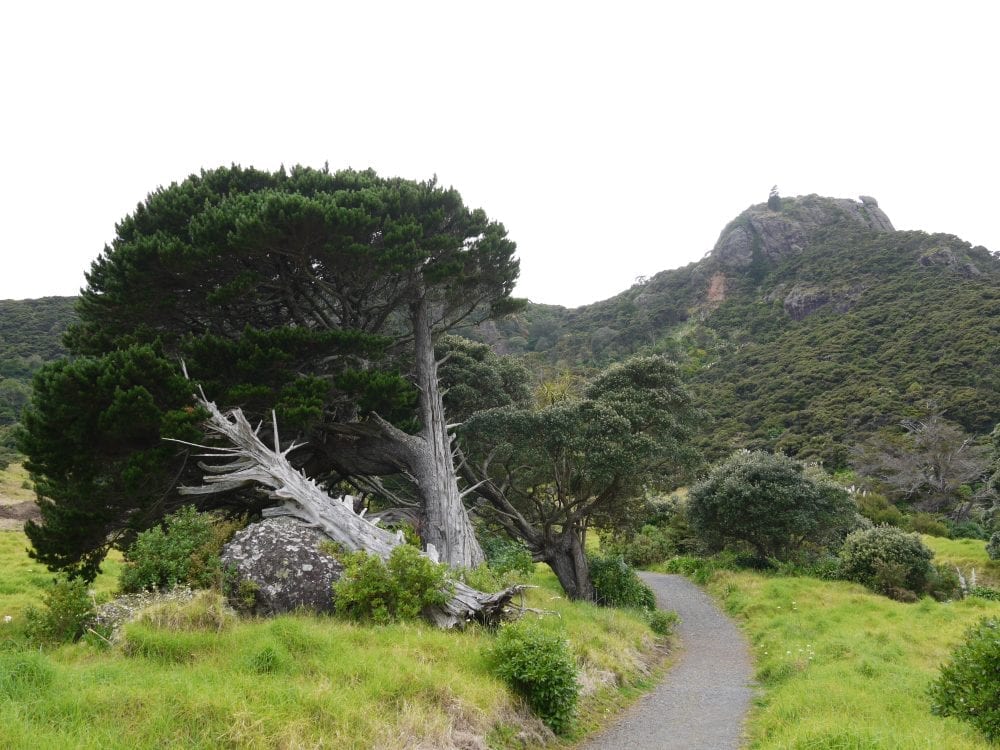
We continued along the coast, stopping at many beaches and bays. We were especially struck by the beauty of Helena Bay, Taupiri Bay, and Elliot Bay. At the latter, we took our first swim in the Pacific Ocean. It was October, and the water was cold.
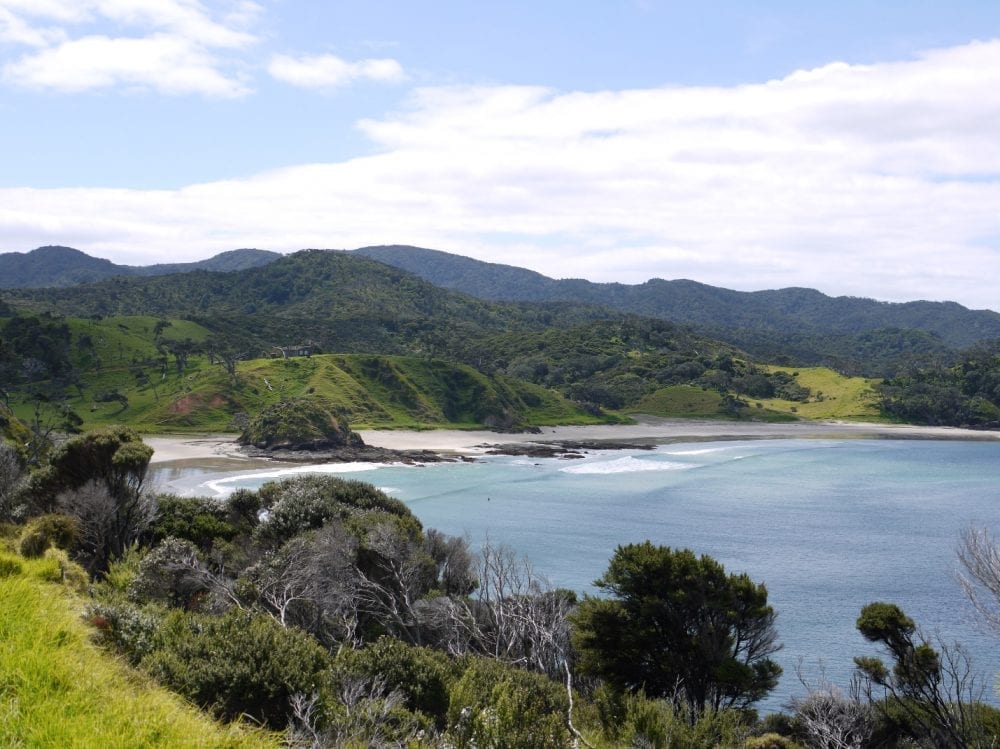
Accommodation
We arrived in Russell in the evening, walked along the waterfront, visited the local museum, and entered an old church surrounded by centuries-old gravestones.
We stayed at Russell TOP 10 Holiday Park, a well-equipped holiday park with campsites, cabins, a kitchen, dining area, showers, and laundry. We paid NZ$80 for one night for two people, sleeping in the car. And really enjoyed our stay.
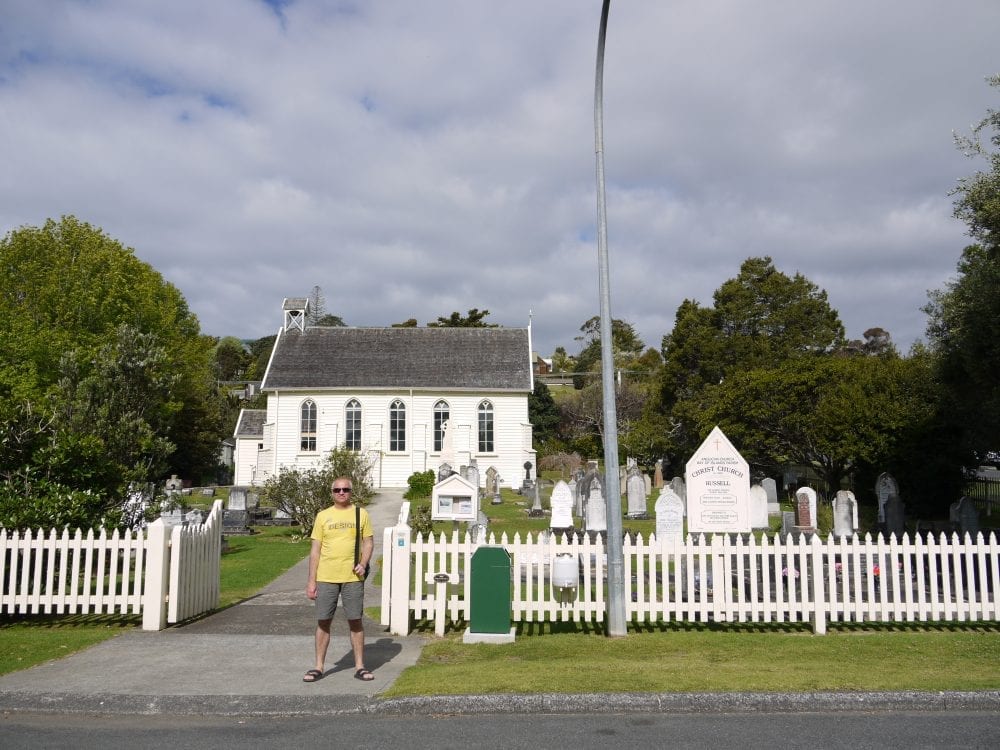
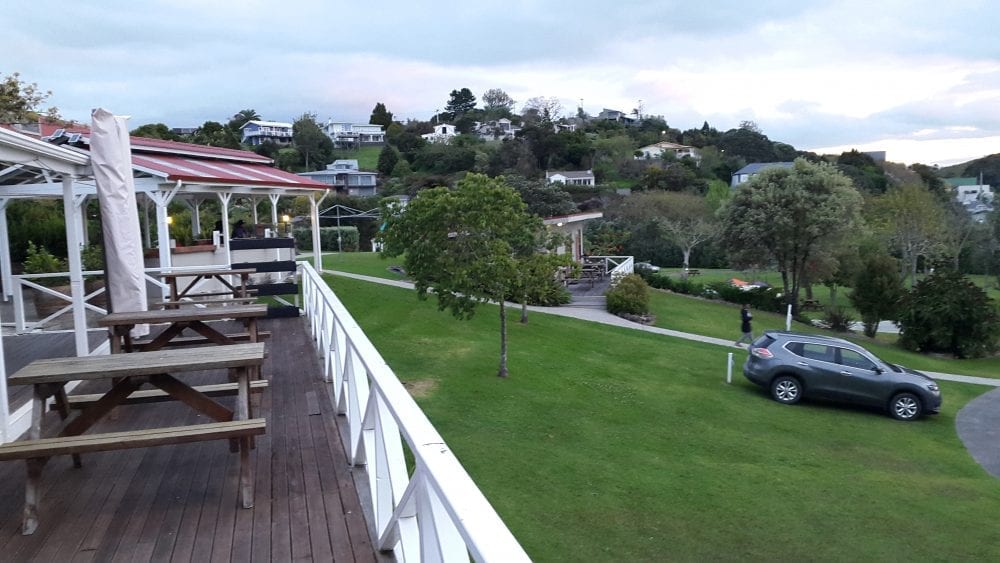
Russell
Day two – Cape Reinga
The next morning, we continued the trip. We could have taken a ferry to Paihia, but chose a detour instead—which we later regretted. A 30 km stretch was unsealed gravel road, full of dust and risk to the windshield and tires. Paihia also has a TOP 10 Holiday Park, so we could have stayed there and skipped Russell.
We visited Haruru Falls. Not very impressive, but we checked it off the list.
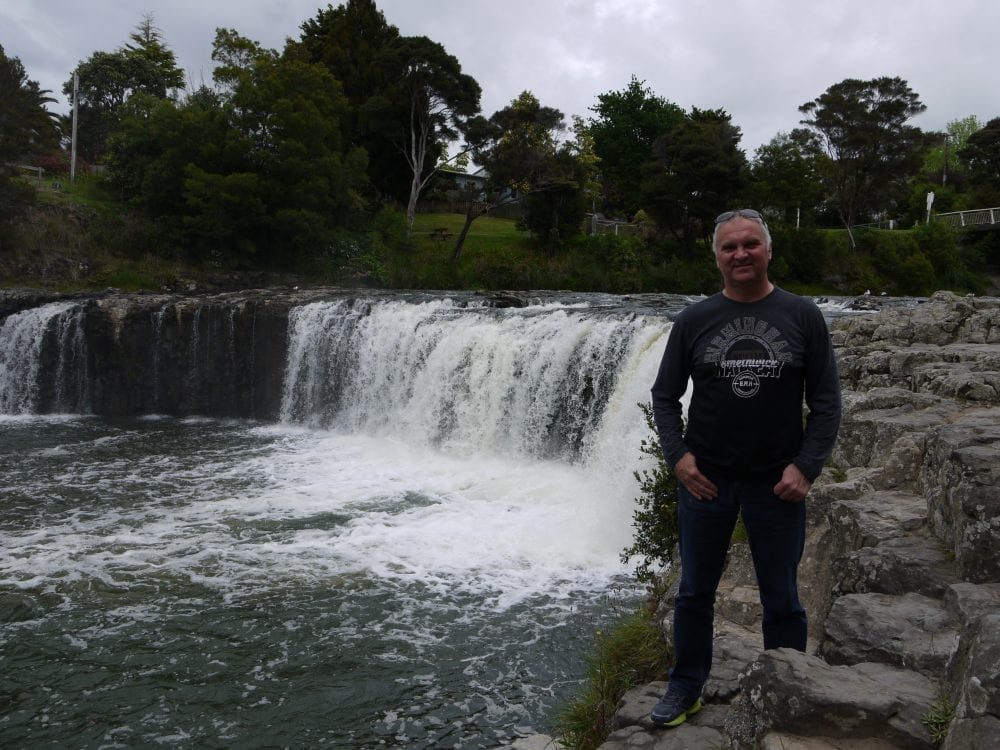
Haruru Falls
By afternoon, we reached Cape Reinga. The car park and surrounding area were crowded with buses and tourists. We walked the long path down to the lighthouse. To say we were amazed would be an understatement. The views were awe-inspiring.
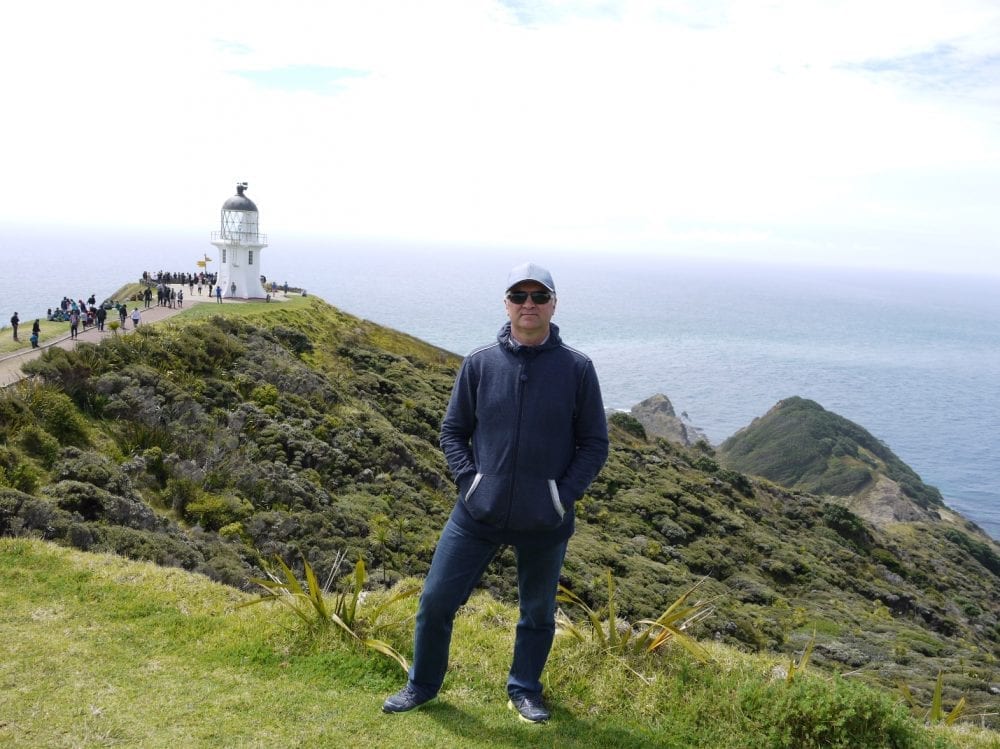
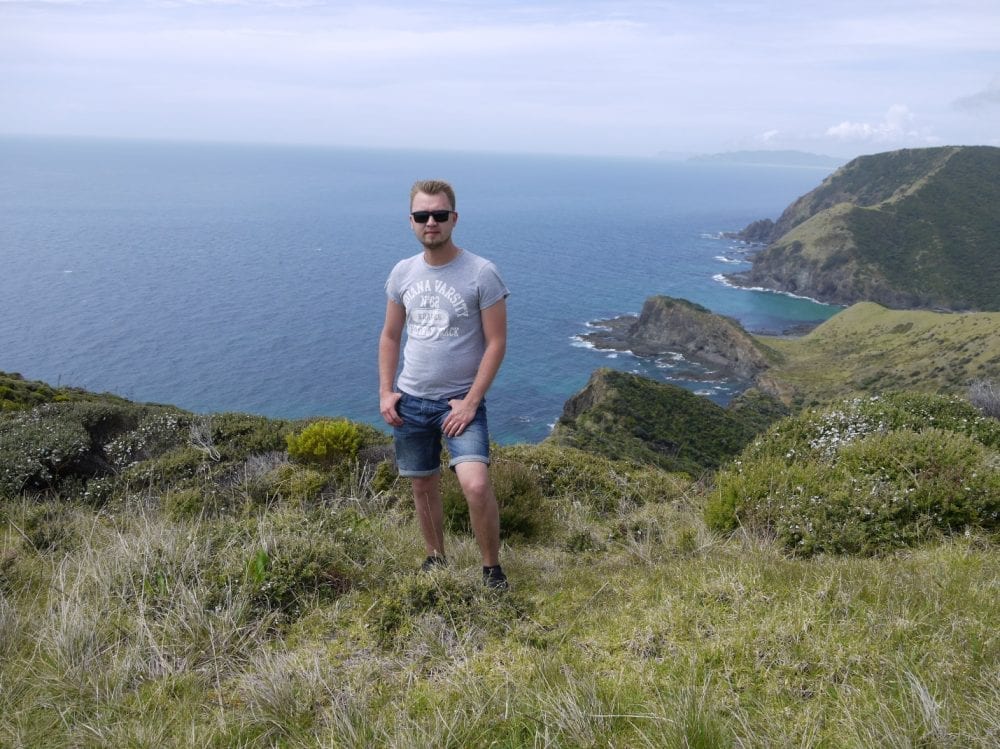
Cape Reinga
On both sides, the vast waters of the Tasman Sea and Pacific Ocean stretched endlessly. You could clearly see the line where they met. Standing there, realizing our home lay thousands of kilometers across the water, we felt like tiny grains of sand compared to the ocean’s immense power.
You could easily spend the whole day at the cape—hiking trails lead down to the sea and nearby beaches. It’s best to arrive early to beat the crowds and take better photos.
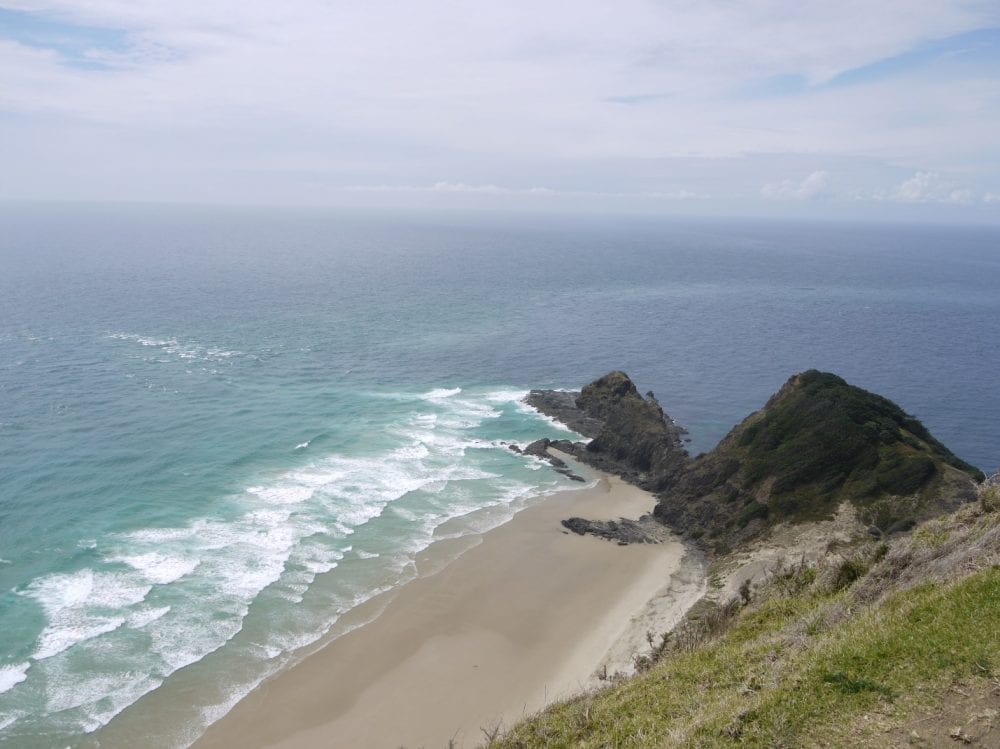
Cape Reinga
Spirits Bay
On our way back, at kilometer 18, we turned left to Spirits Bay. A 26 km road, partly gravel, but worth every bump. A breathtaking 10-km-long beach awaited us. There’s also a campsite where you can sleep in a tent or car. If I ever return, I’d definitely stay here.
As the sun set, it was time to head back to Auckland. I skipped a fuel stop and soon regretted it. Our fuel gauge was almost empty and no gas station in sight. I was already imagining needing a tow. Luckily, we made it.
We took a different, shorter route back through mountain passes with tight, winding roads. Despite the challenging drive, the roads were well-marked, with reflective lines and signs, making night driving surprisingly comfortable.
In two days, we drove 1,100 km, spent about NZ$160 on fuel (8L/100 km at NZ$2/L), and the whole trip cost around NZ$400, not counting food.
Trip to Karekare, Piha, and Muriwai Beaches
Next, we explored the western coast near Auckland, visiting the famous beaches of Karekare, Piha, and Muriwai. We rented a car from Ezi Car Rental on Beach Rd. Newer cars, lower prices, and a 20% online promo code. It was November, so rentals were cheap and readily available. In peak season (from December), cars book up quickly and prices double.
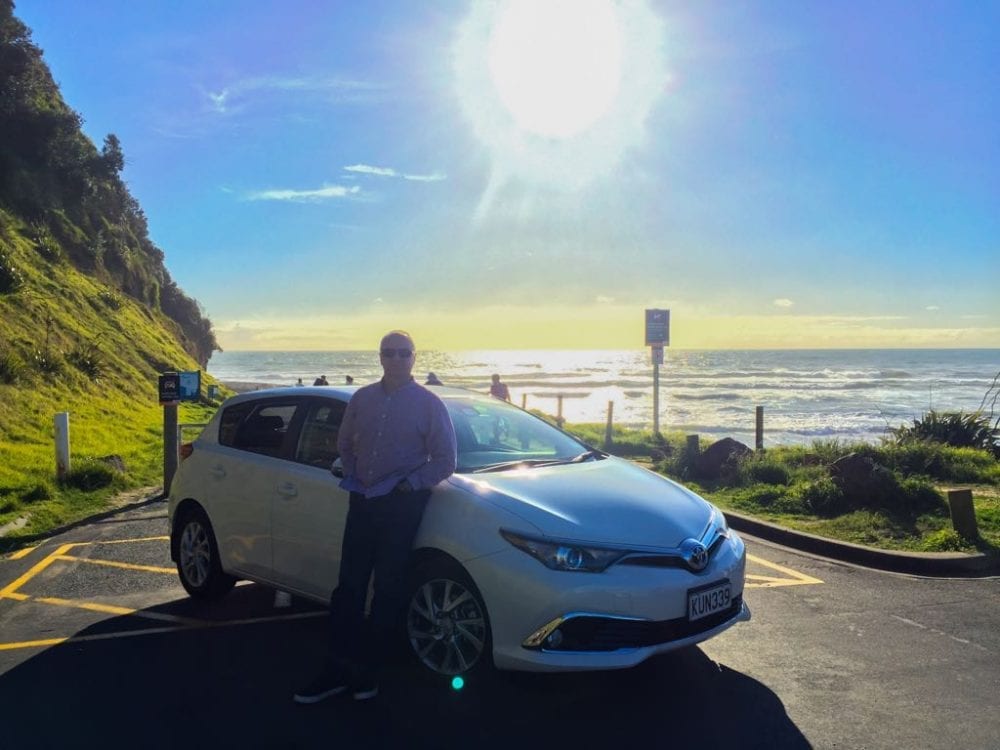
Our rented Toyota Corolla Hatch
We got a brand-new Toyota Corolla Hatch for NZ$48/day with Zero Liability insurance, full tank (returned full), and headed out early. It’s about 40 km to Karekare. On the way, we stopped for a 40-minute hike to Upper Nihotupu Reservoir, stood on the dam, and took photos.
Karekare Beach is known for its black volcanic sand, which gets extremely hot under the sun. It’s beautiful and popular. The car park has picnic tables and restrooms. A short trail leads to the scenic Karekare Waterfall.
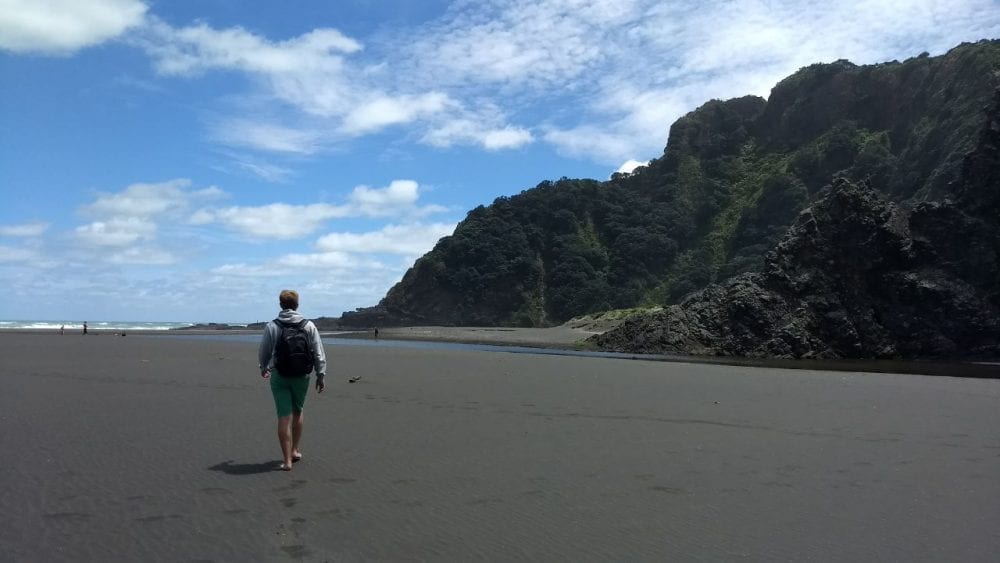
Karekare beach
Piha and Muriwai Beaches
From Karekare, it’s about 8 km to Piha Beach. There’s a lookout point as you approach, with views of the beach split by Lion Rock. You can climb Lion Rock for even better views. The beach is very popular with surfers and visitors. There’s also Kitekite Falls nearby.
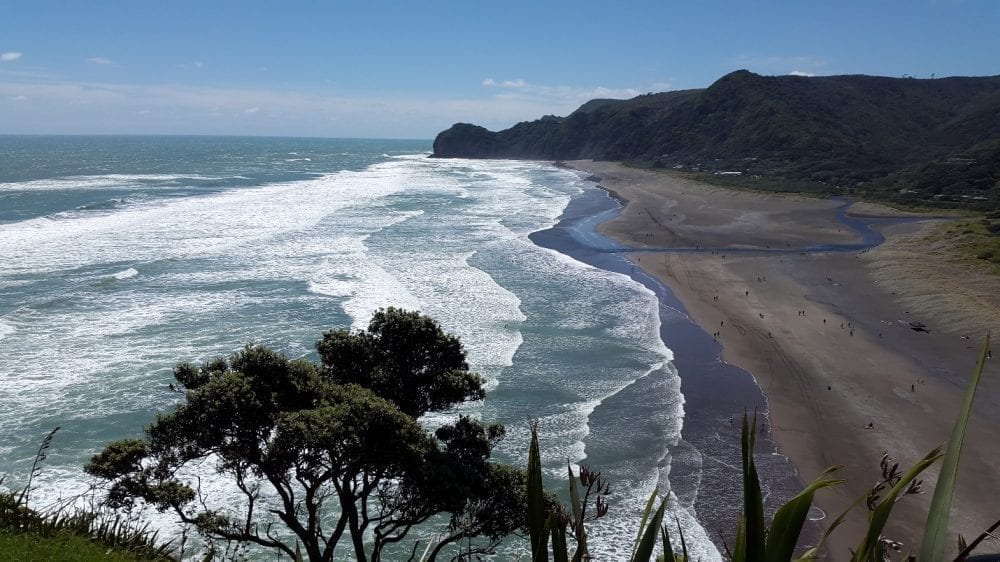
Piha beach
From Piha, we drove 55 km to Muriwai Beach—famous for its black sand, big waves (great for surfers and kite surfers), and a gannet colony nesting on the cliffs. The crashing waves create giant sprays, so be careful – your gear might get wet.
Trip to Hamilton and Tauranga
This time, we headed to Tauranga on the eastern coast, passing through Hamilton. Tauranga is known as a resort town. We rented a Toyota Yaris from Ezi for NZ$42/day with full insurance. It took us about 2 hours to drive the 130 km to Hamilton, where we visited the city’s famous gardens. Themed spaces inspired by Chinese, Japanese, Indian, Italian, English, and American designs. Very impressive.
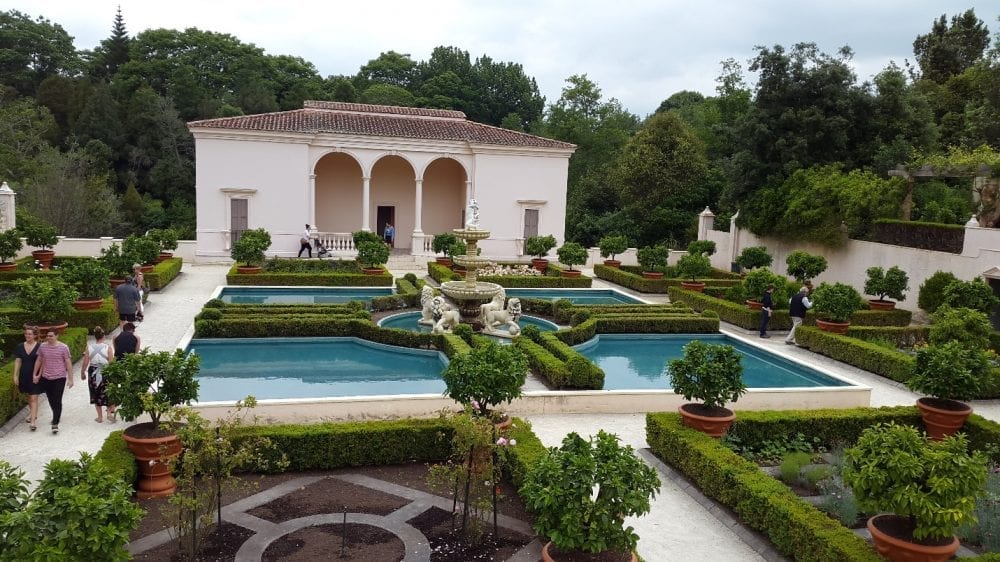
Famous gardens of Hamilton
From Hamilton to Tauranga is another 110 km, passing by Hobbiton. We didn’t stop, saving it for next time. Our final destination was Mount Mounganui, a scenic spot with a lookout and a long beach. We returned to Auckland that evening after 500 km, spending about NZ$65 on petrol (6.5L/100 km).
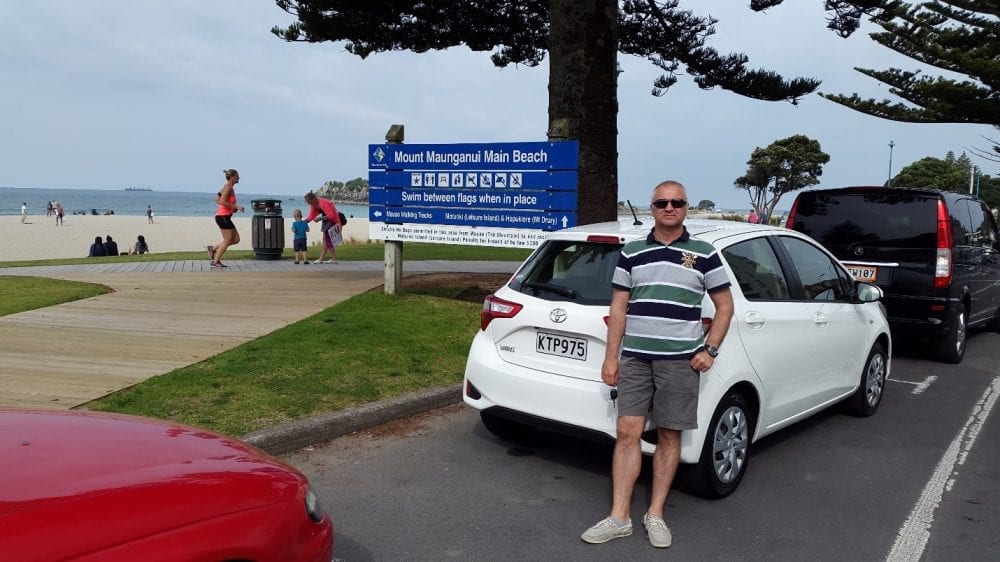
Tauranga
Trip to Rotorua, Lake Taupo, Mt. Ruapehu
Next, we explored Rotorua, Lake Taupo, and Mount Ruapehu. Again, we booked a Toyota Corolla Hatch from Ezi for NZ$48/day. When we arrived, our car wasn’t ready, so they offered us a free upgrade: a brand-new Toyota Highlander Limited with navigation and adaptive cruise control. An amazing bonus!
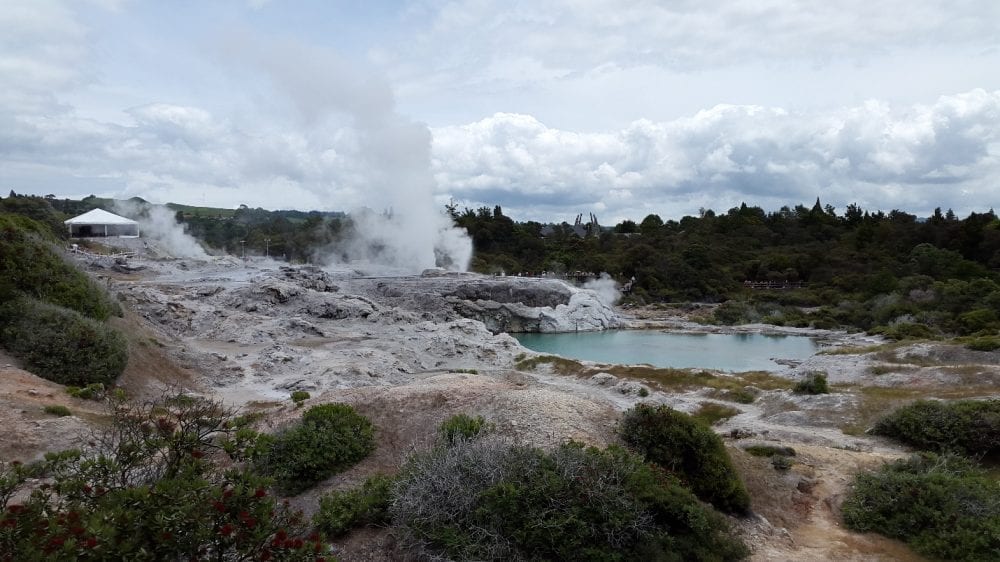
Rotorua geothermal lakes and geysers
We set off for Rotorua, known for geothermal activity. Lakes and geysers are everywhere. There are too many attractions for one day, so we chose Whakarewarewa – The Living Maori Village, built on hot springs and home to a Maori community. Tickets cost NZ$40 and included a 30-minute cultural performance with the traditional haka. Very interesting.
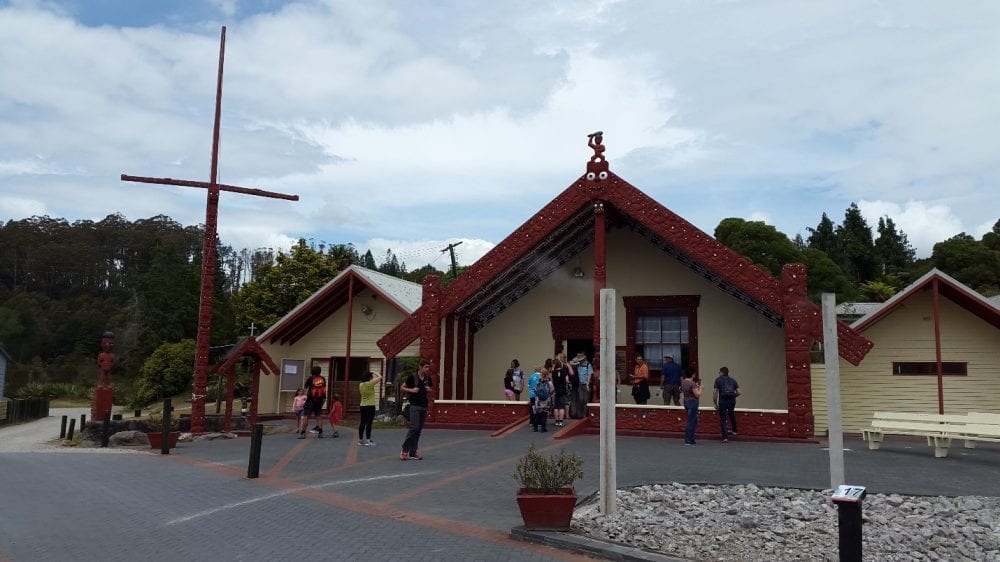
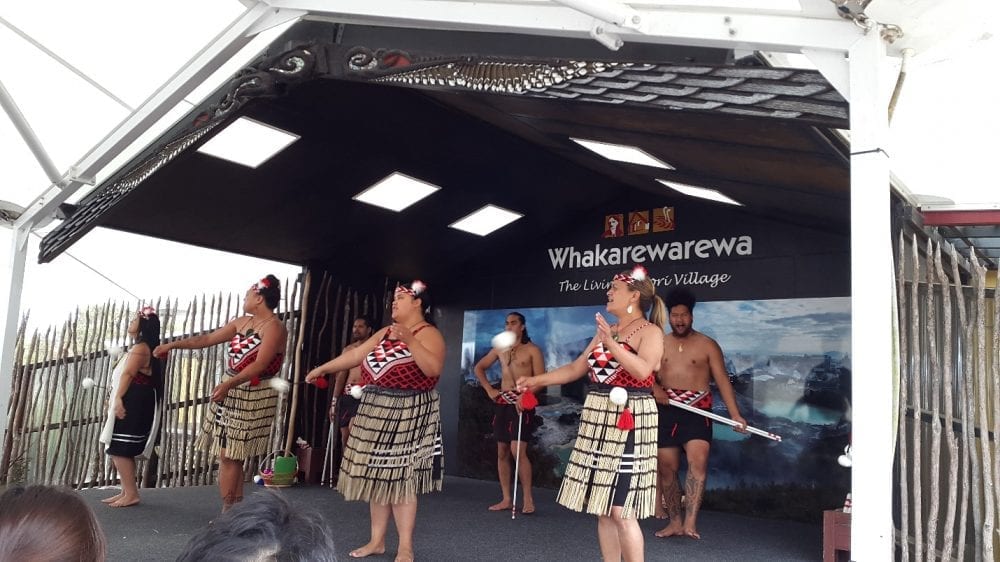
Whakarewarewa – The Living Maori Village
Next, we drove to Lake Taupo, the largest lake in New Zealand, formed in a giant volcanic crater. It reminded us of Lake Baikal. We parked and walked along the scenic waterfront — beautiful. There were options to cruise the lake or fly in a seaplane over it and nearby volcanoes at Tongariro National Park, but we continued to Mt. Ruapehu.
Why Ruapehu? Because it’s home to the Whakapapa ski resort, one of the closest to Auckland. I love skiing, so we had to check it out. As we approached, the weather worsened—heavy rain and dark clouds. We climbed a winding road in near-zero visibility and arrived in the clouds. The lifts disappeared into the mist. It felt eerie — like the mountain didn’t want us there.
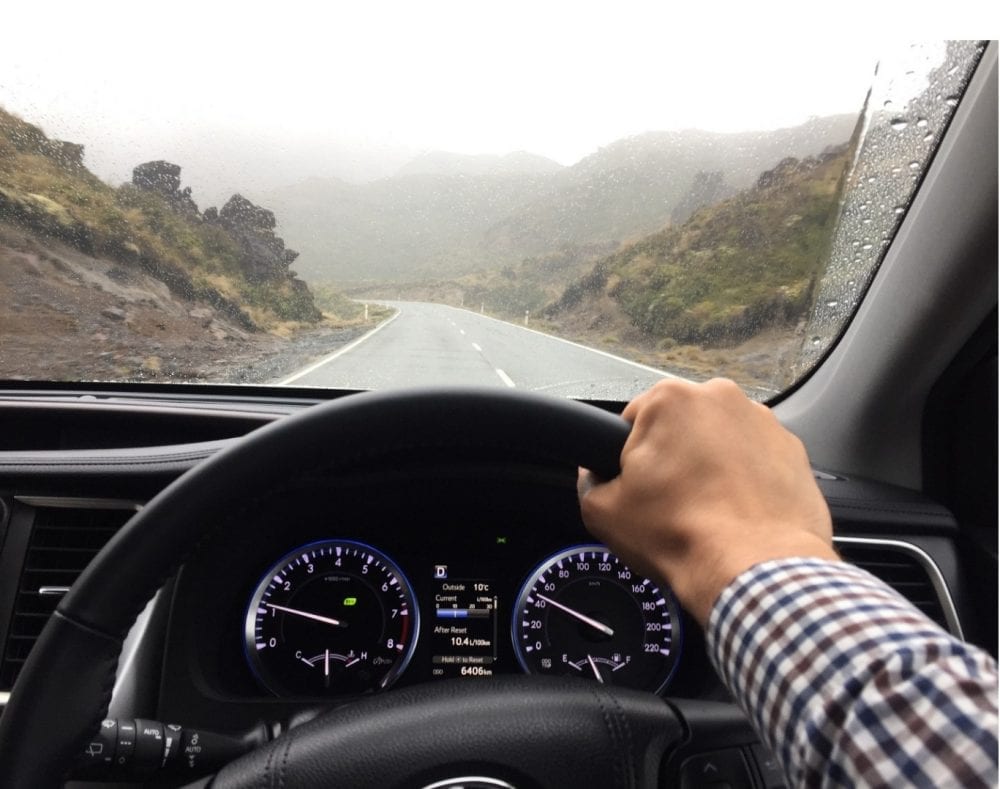
We waited 30 minutes but had to leave disappointed. Half an hour later, as we hit the highway, the skies cleared and the sun came out.
That night we drove 1,000 km in a day, spending about NZ$210 on petrol (10L/100 km).
Epilogue
If you ever get the chance to visit New Zealand, try to see as many places as you can—on both the North and South Islands. It’s an unforgettable experience and a priceless adventure.
There is a great saying: “In the end you will be disappointed by two things: that you didn’t love much and didn’t travel a lot”


